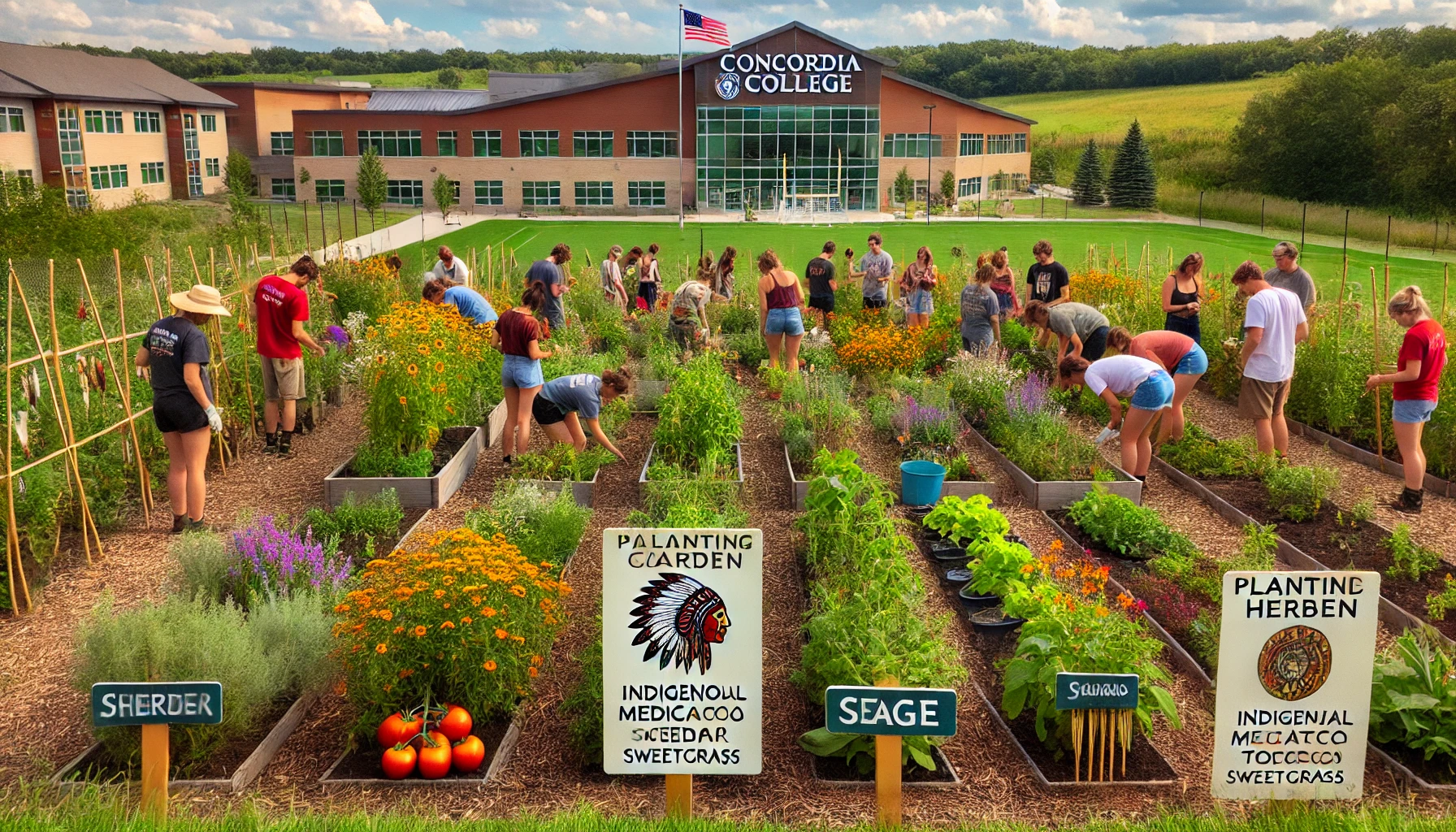A Community Effort in Healing and Unity
Introduction to the Cornucopia Garden
On a hot mid-summer afternoon, Concordia College in Moorhead, Minnesota, expanded its Cornucopia garden with the introduction of an Indigenous medicinal herb garden, marking a significant milestone for the institution. This garden, surrounded by wildflowers and the soothing sounds of wind chimes, is designed to be a space of healing and community.
A Collaborative Effort
Brandon Baity, the interim executive director of the Indigenous Association in Fargo, expressed his hopes for the garden. “I really hope this is a space of just healing,” he said, envisioning it as a community hub.
The creation of the garden was a collective endeavor involving about a dozen volunteers, including garden staff, interns, Indigenous Association members, and university staff. Waabishki Giiwedin Iwke, the Indigenous Association’s event coordinator and administrative assistant, described the diverse group as a “rainbow tribe.” She emphasized the importance of community connection for urban Natives and expressed her enthusiasm for being part of such a meaningful project.
Planting the Sacred Herbs
The inaugural planting took place a short distance from the main campus, near the school’s sports complex. Volunteers planted four sacred herbs: ceremonial tobacco, cedar, sweetgrass, and sage, which hold significant cultural importance for the Anishinaabe people.
Baity, a member of White Earth Nation, humorously likened himself to “Johnny Sageseed,” highlighting the critical role these herbs play in their culture. Sage and sweetgrass are often burned as a smudge to cleanse the spirit, cedar is used in various aspects of medicine and protection, and ceremonial tobacco is a vital plant used to show gratitude and offer prayers.
Expanding the Garden’s Offerings
Garden manager Sarah Stauner added echinacea, white yarrow, fennel, culinary sage, and a rehomed rose bush to the garden. Stauner hopes that the garden’s growth will attract more visitors, particularly those from the Indigenous community seeking resources.
The Partnership’s Purpose
Stauner explained the motivation behind the partnership between the college and the Indigenous Association, emphasizing the importance of educating people about different cultures and engaging students in new ways.
Baity hopes the garden will not only spread physical plants but also knowledge about traditional medicines and cultural practices. He believes that understanding and appreciating diverse perspectives can lead to stronger community connections.
A Place for Everyone
Waabishki Giiwedin Iwke echoed the mission of the Indigenous Association, emphasizing the goal of uniting and strengthening not only their community but the world. The garden is intended to be an inclusive space, welcoming everyone regardless of background or beliefs.
Stauner invited everyone to the garden, offering fresh heirloom carrots and encouraging visitors to take herbs, while noting their harvests on a sign-out sheet to help with future planning. Additionally, Waabishki Giiwedin Iwke mentioned the traditional practice of leaving some ceremonial tobacco as a spiritual gesture.
The Concordia College Indigenous medicinal herb garden stands as a testament to community collaboration, cultural education, and the power of plants to heal and unite.
